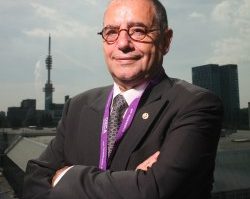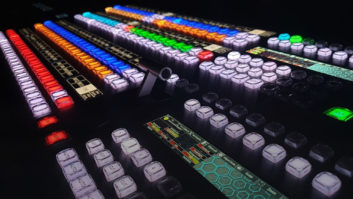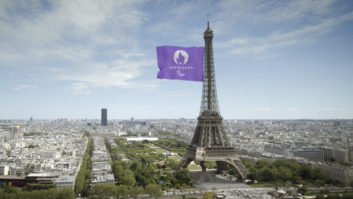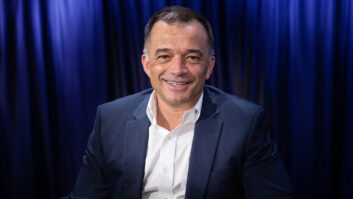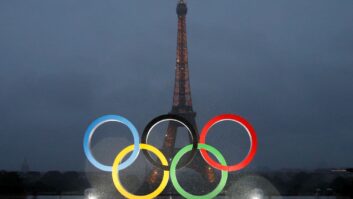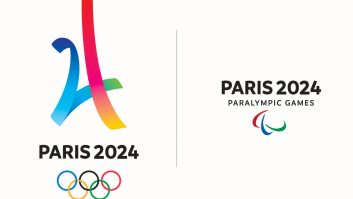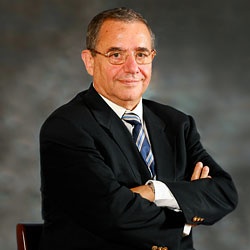
At least 15 broadcasters will be able to show ten hours a day of the London Olympics in 3D including some events not previously captured in the format, writes Adrian Pennington. Manolo Romero (pictured), Chief Executive of Olympic Broadcast Services (OBS) also reveals his plans to deliver the biggest ever audience to an Olympic Games exclusively to TVBEurope.
The momentous, although not entirely unexpected, decision to air a portion of the Olympics Games for the first time in 3D has been in serious planning for at least six months, according to Romero, although many details have yet to be nailed down. No tests on any event have yet been performed in 3D by OBS, although venues and sports have been checked for their potential.
He said that nearly 300 hours of the Games will be covered in 3D at 14 venues, enough for OBS to create a 10-hour daily mix of 3D live and highlights.
“The only reason we have decided to produce in 3D is to satisfy the demands of our rights holders,” said Romero. “We would not be producing in 3D were it not for them.”
Although he declined to name which broadcasters requested 3D, Romero said that there were 15 at this time, a figure he expected to grow considerably, and with some “very major ones” on board.
The 10-hour 3D feed will be produced separately from the main 2D broadcast by three outside broadcast crews. It will also be distributed with English commentary. Again, Romero declined to name the OB crews involved but OBS will contract specialists (such as CAN Communicate or Alfacam though he did not name these), to concentrate on the 3D production.
The 3D OBs will each carry 12-14 rigs. Fifteen to twenty ENG crews sporting Panasonic integrated 3D camcorders will also contribute as well as being used “to get near to the athletes in some sports,” Romero said.
New to 3D
“We will cover the opening and closing ceremonies, and major Olympic areas of gymnastics, track and field, swimming and the Olympic park,” he added. “We will also experiment with other sports dependent on the demand for them from rights holders. Some of the sports have not been captured in 3D before.”
These include swimming and canoeing. The potential of canoeing with oars and boats slaloming round posts in splashing water is obvious though swimming could be trickier given that much of the athlete’s action happens underwater. Presumably OBS would have to position the 3D cameras as close to the water level as possible, or optimise the underwater tracking camera system.
“One of the challenges is to locate 3D camera positions in places where there are currently optimum seating positions,” says Romero. “We will find a way. We need to try to do our best to make it look good, but it will not be easy. We will follow our philosophy as with other technology which is to push the technology, to try our best and when we reach a limit which we cannot overcome we hope that for the next games we will do better.”
Panasonic’s twin-lens 3D camcorder HDC-Z10000 (pictured), which was announced last week, but not yet on the market, will be used for ENG along with Panasonic’s P2 3D cameras (such as the AG-3DP1). It is not clear what cameras will be used in the 3D rigs.
Rights holders will be able to receive the live feed or ENG ingested footage at the IBC to compile their own 3D broadcasts, but OBS will also create a live and highlights package of one hour, daily. “This is for those broadcasters who do not have a 24-hour dedicated 3D channel, but who can perhaps segment short 3D broadcasts on their existing channels,” said Romero.
This would include the BBC, which aired its first live 3D coverage earlier this year on BBC HD of the Wimbledon tennis finals.
It is part of OBS’ mission, said Romero, to pioneer new broadcast technology. This includes trials of NHK’s Super Hi-Vision ultra HD format in-conjunction with the BBC at various venues where large screens will carry live SHV transmissions.
Biggest Olympics ever
He is equally, if not more, excited by the innovation of multi-channel distribution for next year which he says will help create the biggest ever audience for an Olympics yet.
“We did this for the first time for Vancouver but this is on an entirely different scale,” said Romero. “We are providing 12 channels by satellite of Olympics coverage in English, Arabic and Spanish language commentary as well as a complementary data feed which will enable any broadcaster which may not have the resources to come to London to organise a substantial Olympics operation. In some cases broadcasters do not have the bandwidth to be able to bring all the signals back to their domestic audience on their own. They can use it as a main source or as secondary source or simply as a source for additional shots. I believe this is going to be a revolution on its own.”
Broadcasters in New Zealand, Asia, Korea and the US, among others, will benefit, which will help boost the already massive global audience for the event.
“I have no doubt this will bring the biggest Olympic Games audience ever. Hands down. That is one of our goals,” said Romero.
